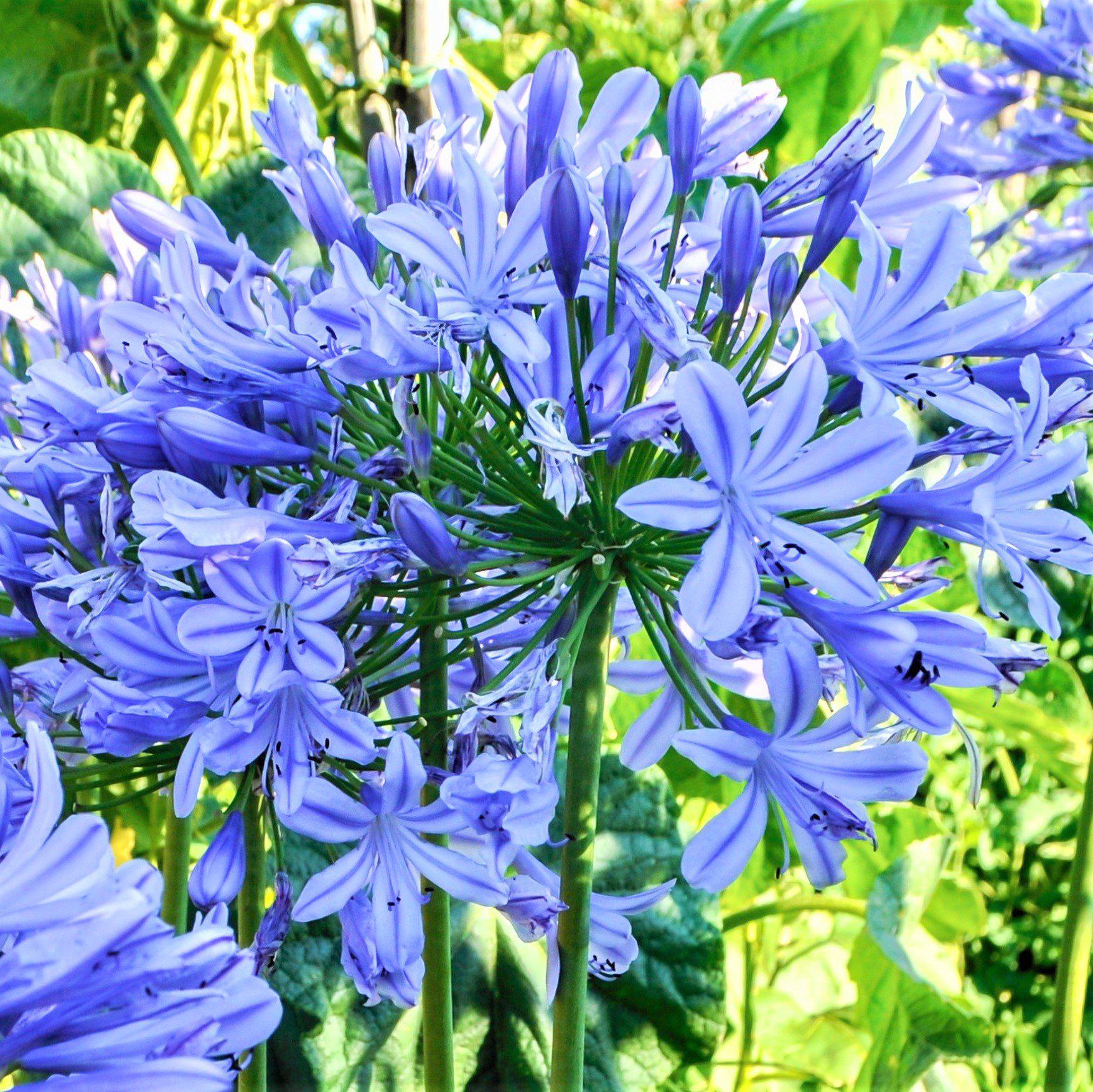Agapanthus Growing Conditions: Dirt, Sunshine, and Watering
Agapanthus Growing Conditions: Dirt, Sunshine, and Watering
Blog Article
Mastering the Art of Agapanthus Care: Crucial Steps for Healthy And Balanced Growth and Vivid Blossoms
In the world of horticulture, the farming of agapanthus stands as a rewarding endeavor for those who seek to support these sophisticated flowering plants. With their striking blossoms and stylish vegetation, agapanthus has recorded the interest of gardeners worldwide. Nonetheless, attaining ideal growth and vibrant blossoms calls for a nuanced method that encompasses different vital actions. From selecting the ideal range to understanding pruning techniques, the journey in the direction of cultivating thriving agapanthus plants is multifaceted and holds the essential to unlocking the full possibility of these herb treasures.

Choosing the Right Agapanthus Selection

When selecting the ideal Agapanthus variety for your yard, think about factors such as environment suitability, bloom shade, and development practice. Furthermore, think about the climate in your area to guarantee the Agapanthus variety you choose can grow in your certain problems. Comprehending the development behavior of various Agapanthus selections is essential for correct placement within your yard.
Ideal Planting Problems
Considering the ideal environmental demands is crucial for successful Agapanthus cultivation. Agapanthus plants are delicate to chilly temperature levels and should be shielded from frost during winter season months.
To ensure healthy and balanced growth and dynamic blossoms, plant Agapanthus light bulbs at a depth of regarding 2-4 inches and room them 8-12 inches apart. Adding raw material, such as garden compost, to the soil can improve drain and fertility, advertising robust root advancement. Mulching around the base of the plants aids preserve dampness and subdues weed growth. Routine watering is vital, specifically during the expanding period, to maintain the soil consistently wet yet not saturated.
Watering and Fertilizing Tips
Preserving proper dampness levels and giving essential nutrients are essential components in the treatment regimen for Agapanthus plants. When it comes to sprinkling Agapanthus, it is important to strike an equilibrium. These plants favor consistently wet soil however are vulnerable to root rot if overwatered.
Fertilizing Agapanthus is crucial for advertising healthy and balanced growth and respected flowers. Use a well balanced fertilizer, such as a 10-10-10 formula, in the very early spring as new development arises. Repeat this application every 6-8 weeks throughout the expanding period. Stay clear of too much fertilizing, as it can result in rich foliage at the expense of blossoms. Constantly follow the maker's directions for correct dilution and application methods. By following these watering and fertilizing pointers, you can ensure your Agapanthus plants prosper and create vivid, More about the author resilient blossoms.
Pruning Techniques for Agapanthus
Trimming Agapanthus plants at the appropriate times and with proper strategies is crucial for maintaining their wellness and advertising ideal growth and flowering. The perfect time to trim Agapanthus is in late winter months or early spring before new growth arises.
Deadheading spent flowers can additionally reroute the plant's energy into producing even more flowers rather than setting seeds. If you desire to gather seeds for breeding, leave some flowers to dry and mature on the plant.
Bear in mind to utilize tidy, sharp tools to make specific cuts and minimize the danger of introducing conditions. Agapanthus. Routine trimming will help maintain your Agapanthus looking healthy and cool while guaranteeing a plentiful screen of stunning blooms
Handling Common Bugs and Illness
After guaranteeing proper pruning strategies for Agapanthus, it is vital to attend to common pests and diseases that can influence the health and vitality of these plants. Agapanthus plants are normally hardy yet can still fall target to specific concerns. One typical pest that affects Agapanthus is the Agapanthus gall midge. This little, orange fly lays its eggs in the foliage, leading to distorted development and flower buds that fall short to open. To battle this parasite, prune and damage any type of affected plant components and consider using try this site insecticidal soap.
Another typical problem is fungal fallen leave area, which offers as dark sores on the leaves. To stop fungal conditions, make certain good air flow around the plants, prevent overhead watering, and get rid of any infected leaves without delay. Additionally, Agapanthus plants can experience root rot if they are grown in inadequately draining pipes soil. To prevent this, plant Agapanthus in well-draining soil and prevent overwatering. By being vigilant and taking prompt action against illness and parasites, you can aid your Agapanthus plants thrive and produce dynamic blooms.
:max_bytes(150000):strip_icc()/agapanthus-growing-guide-7368912_06ba-bf1fa268243b451387986fbd1e2433b3.jpg)
Verdict
To conclude, understanding the art of agapanthus treatment includes picking the best variety, providing suitable planting conditions, appropriate watering and fertilizing, suitable pruning methods, and attending to common pests and conditions. By complying with these vital steps, you can ensure healthy and balanced growth and vibrant blossoms for your agapanthus plants. Keep in mind to frequently keep an eye on and maintain your plants to advertise their overall wellness and longevity.
To make certain healthy and balanced growth and dynamic blossoms, plant Agapanthus light bulbs at a depth of concerning 2-4 inches and area them 8-12 inches apart. By following these watering and feeding tips, you can ensure your Agapanthus plants prosper and produce vivid, lasting blooms.
One usual insect that impacts Agapanthus is the Agapanthus gall midget. Furthermore, Agapanthus plants can endure from our website root rot if they are grown in badly draining pipes soil. By adhering to these important actions, you can ensure healthy and balanced growth and lively blossoms for your agapanthus plants.
Report this page